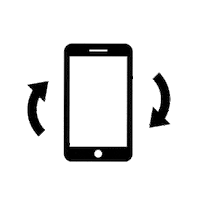Why God gave monkeys thumbs. Dodge front wheel bearings.
Of course, I’m referring to a ‘grease monkey.’ But I’m not sure if there are any of us left out there. Modern shops replace rather than repair these days. And most aren’t even that good at replacing.

So I took the venerable Dodge 1500 in for an alignment. Like I do about every ten years because my father taught me how to drive and not to hammer curbs and potholes.
And guess what?? No can do. I had a front wheel bearing starting to go bad, with a bit of play that I couldn’t quite feel in the steering wheel yet.

Anytime I have an $800 estimate for a plug-and-play bolt-on part with maybe one wire connector, I have to pump the brakes (literally :-)) This is not rocket science. It’s just basic physics. And a big hammer with an appreciation for torque specs goes a long way.

I recall that in college, I couldn’t afford to have anyone work on my car. There were some long Saturday afternoons with barrowed tools in the parking lot of an abandoned Safeway store.

Sure. It was just the tiniest wiggle. Generally, you spin off the hub, pull the inner race with the cone bearings, pack them with new grease, and snug that bad boy back on.
However, alas, the 1980s are gone, and all of these hubs are now sealed assemblies. Not made to be fixed or maintained. And thus, in my eyes, it is the end of the greatest industrialized nation EVER.

But I won’t get angry at a bearing I’ve spun for over 20 years. I’ll save my complaining for how hard it has become to find a quality wheel bearing.
Back in the day, you could trust brand names. Timken in the US of A. SKF out of Sweden. And tried and true KOYO from Japan. It’s been a long time since I have had such a hard time finding quality to buy, regardless of the price.

I can buy a no-name Chinese hub for $30, or OEM Mopar for $550. Both are now coming out of Asia, and price no longer equates to quality. Hmmmmmm. What to install that will last me more than a year? I know it won’t be twenty.
I’ve always loved Timken (which was stamped on the bearing I removed). But guess what? They moved overseas 10 years ago. And the OEM Mopar assembly is stamped (in ink, not embossed or laser cut)….. Made in South Korea? SKF has also mostly offshored, and I couldn’t even find Koyo. Yes. The world as I know it has officially gone to crap.

The old Dodge has not seen much salt over the years. And I did replace the front brakes about 50k miles back (about ten years), so it wasn’t as though the bolts were being broken free for the first time. However, it still required a length of pipe to be slipped over the breaker bar. But the axel did NOT want to come out.

I almost forgot I had a three-jaw puller. Never buy a tool that you will only use twice in your life; rent it instead. It will save you space in the toolbox and give your kids one less thing to sell for a dollar at that great everything-must-go garage sale when you die. But it was convenient not to drive to the automotive store and talk to morons.

It was nice to get everything apart. A little cleanup and then put it all back together. Of course, I had to break out a torque wrench (or two) and snug every bolt to spec. Yes, ‘elbow torque’ is suitable for an oil drain plug. However, I’m more particular when it comes to suspension and brake components.

I always like to compare and contrast new and old parts. It’s interesting to see the changes in materials and the assembly. Of course, every decision was made for cost savings versus engineered upgrades. The time in which we live.

The stud plate was about half the thickness, which I didn’t care for. And the bearing seal look a little cheesier, so I don’t think I’ll get 20 years out of it. Naturally, the ABS cord had the wrong plug end for my vehicle, so I ended up using the old one (I’m not a big fan of wire slices in the undercarriage).

The front axle was a little finicky going back in, but once the spindle nut snuggled up, the drive shaft returned to its home sweet home. As expected. And anyone who knows me knows that after I got the tire back on, I dragged the jack over to the other side and replaced that bearing as a precaution. But I’ll keep those OEM hubs. If for nothing else, it’s one more thing for my kids to throw out in 20 years!

And this is why guys always want a heated garage during the dark days of winter. ToolBoy out!!







 Total views : 221844
Total views : 221844
















Oh does this bring back memories of me changing the master brake cylinder in a 1959 VW Bug that I owned in the late 1970s. Borrowed tools & driveway. Anytime a couple of decades have passed change is “interesting” to observe.
Cars were so simple back then. For a VW, all you needed was a 14mm wrench and a hammer, and you could rebuild the entire engine while underwater! Every time I pass someone too far under a poorly supported car doing a roadside repair, I whisper a little prayer to St. Christopher. And check YouTube the next day for the latest Darwin Awards. 🙂
Well done, Jammer
I watched Red Bus Lead Mechanic Cal replace an entire front bearing hub assembly in a gravel parking lot on my Red Bus. Then throw me the keys and tell me to drive it 75 miles over the Sun Road to the shop. Yeah, no torque wrench. That was a drive faith.